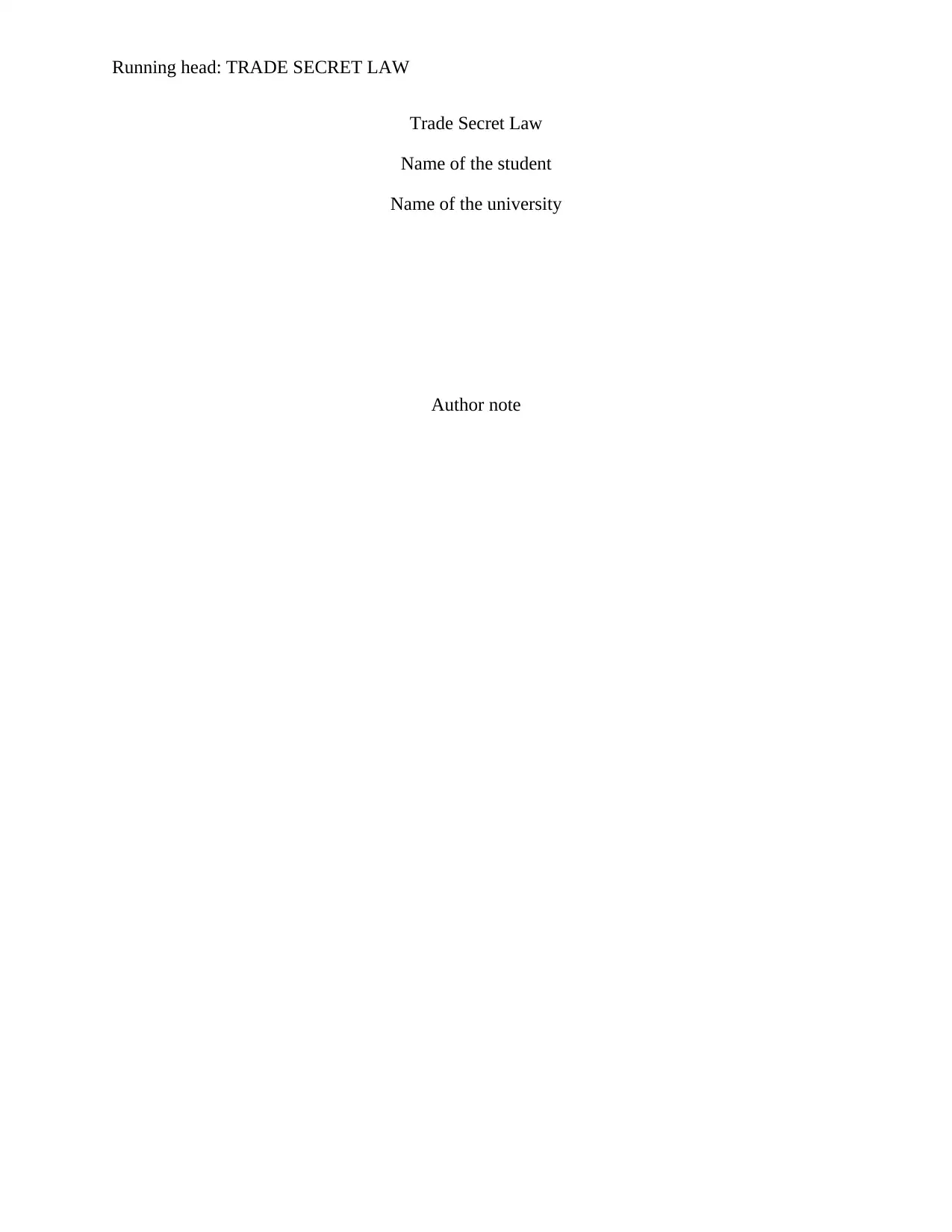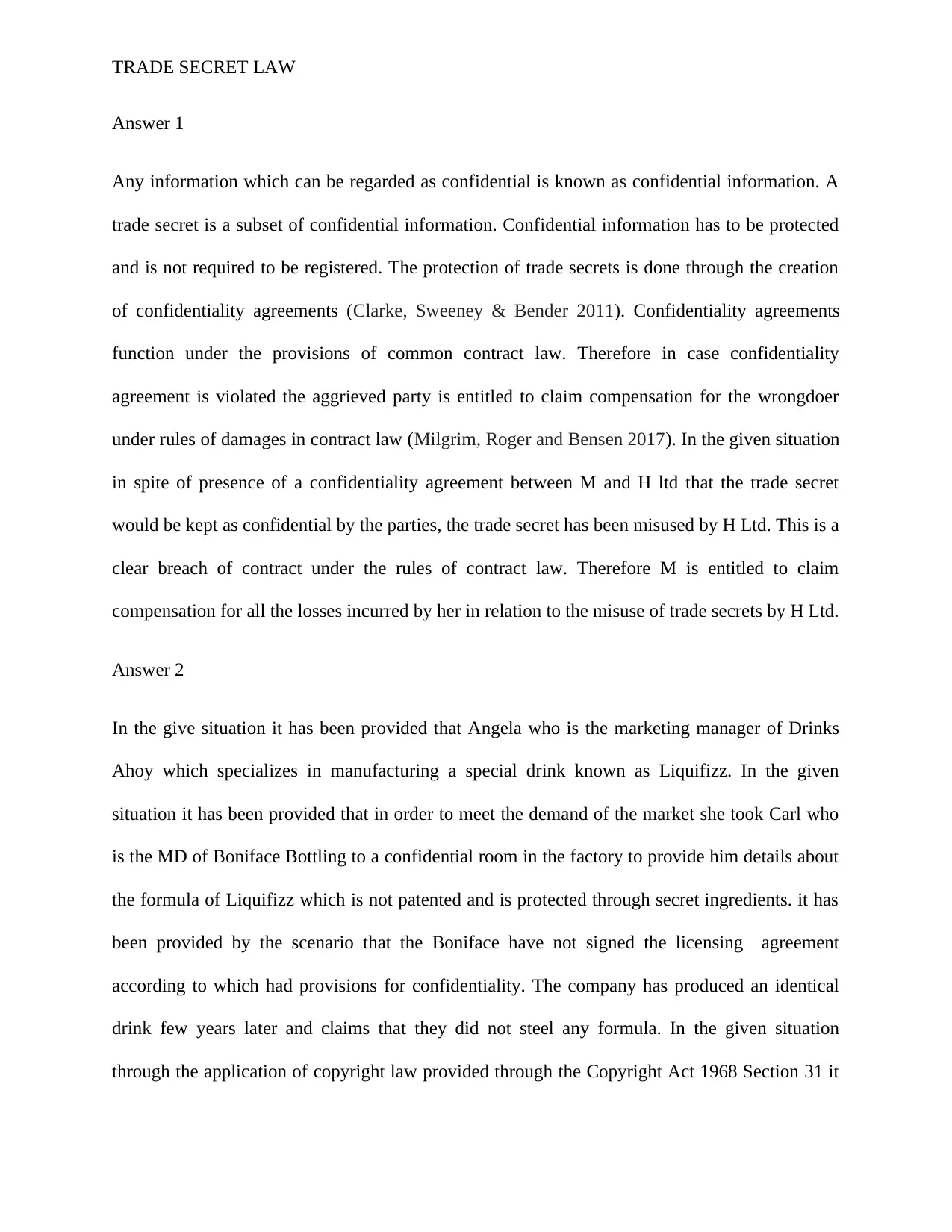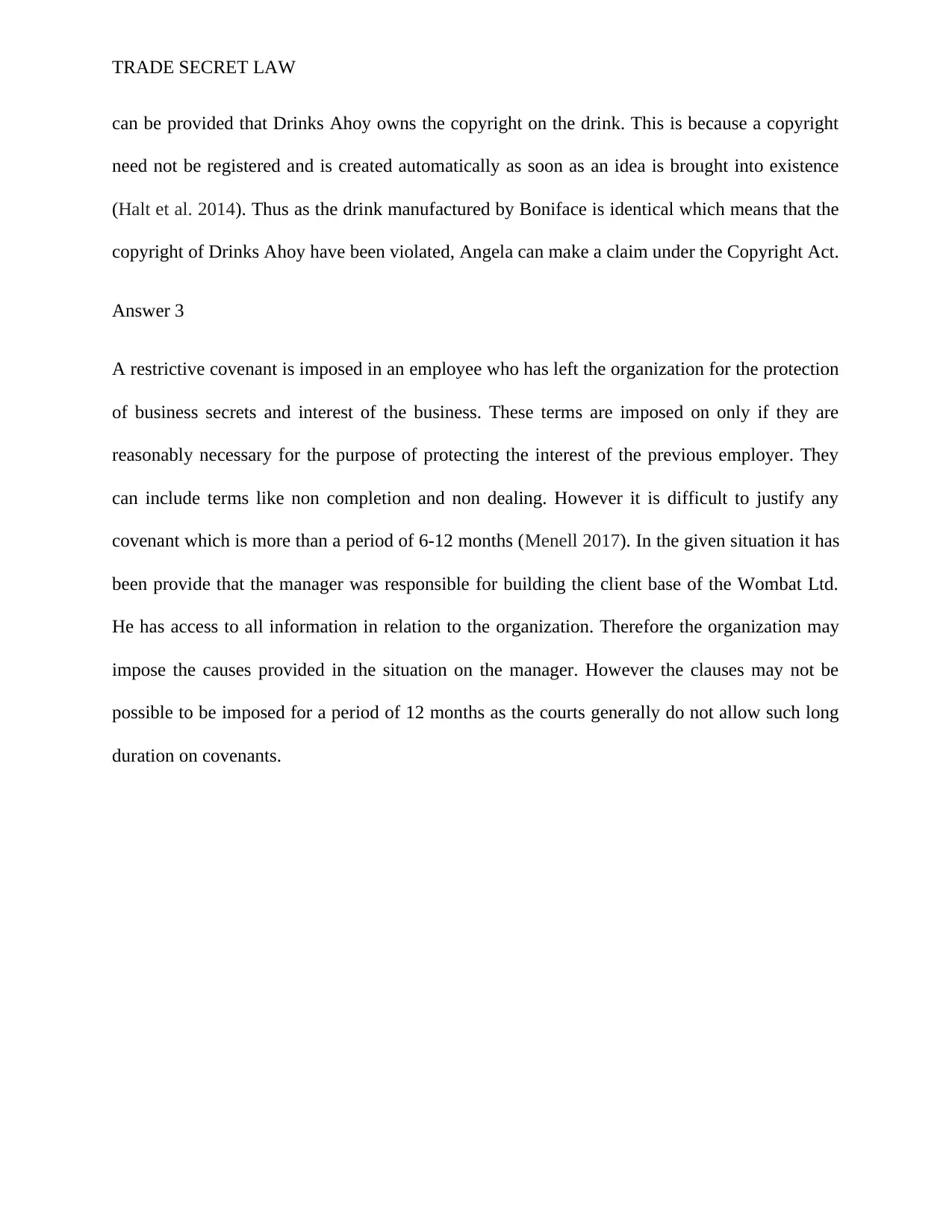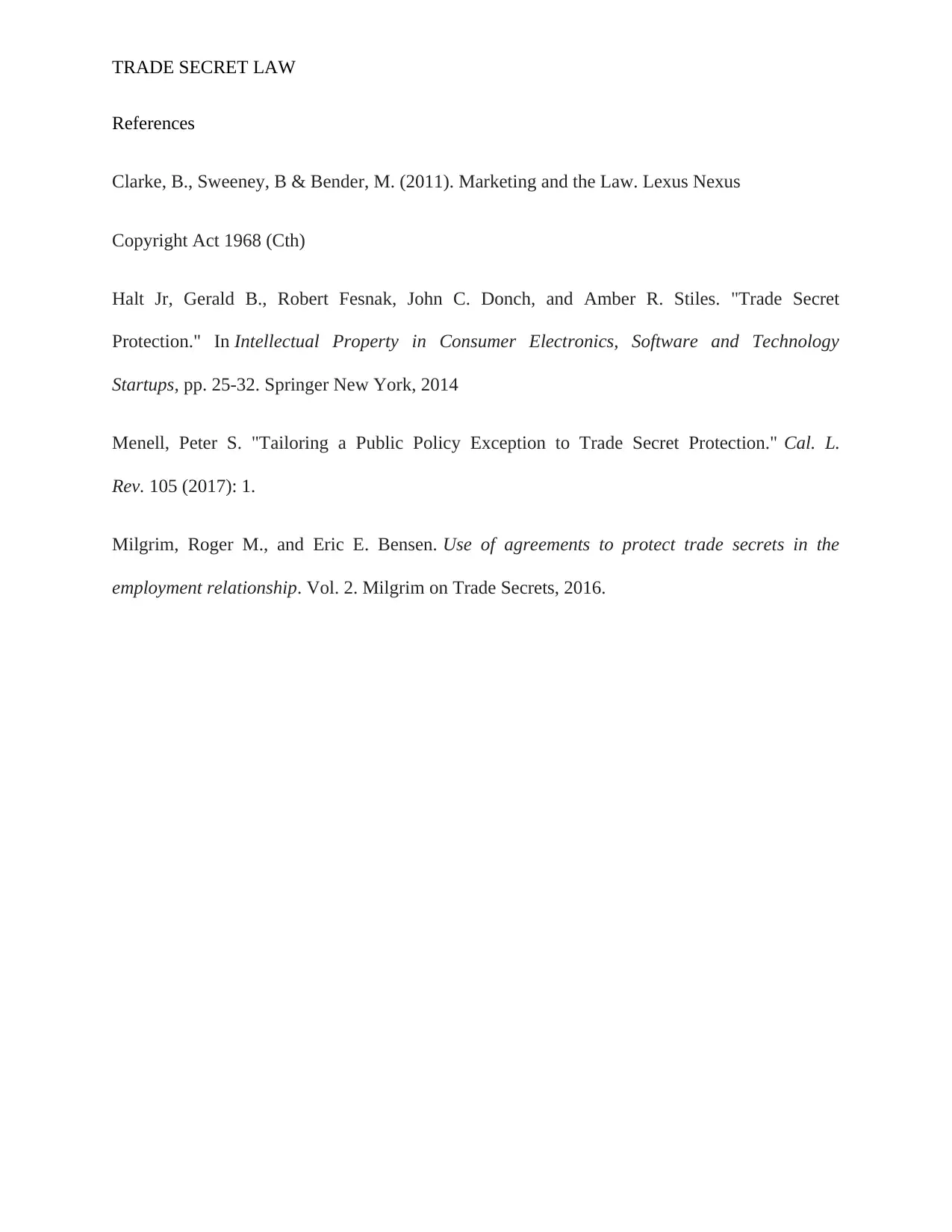Understanding Trade Secret Law
VerifiedAdded on 2020/04/21
|4
|728
|164
AI Summary
This assignment explores the concept of trade secret law. It examines confidential information, trade secrets, and confidentiality agreements. The assignment also delves into copyright law and its application to unique drinks. Finally, it discusses restrictive covenants imposed on former employees to protect business interests.
Contribute Materials
Your contribution can guide someone’s learning journey. Share your
documents today.
1 out of 4










![[object Object]](/_next/static/media/star-bottom.7253800d.svg)